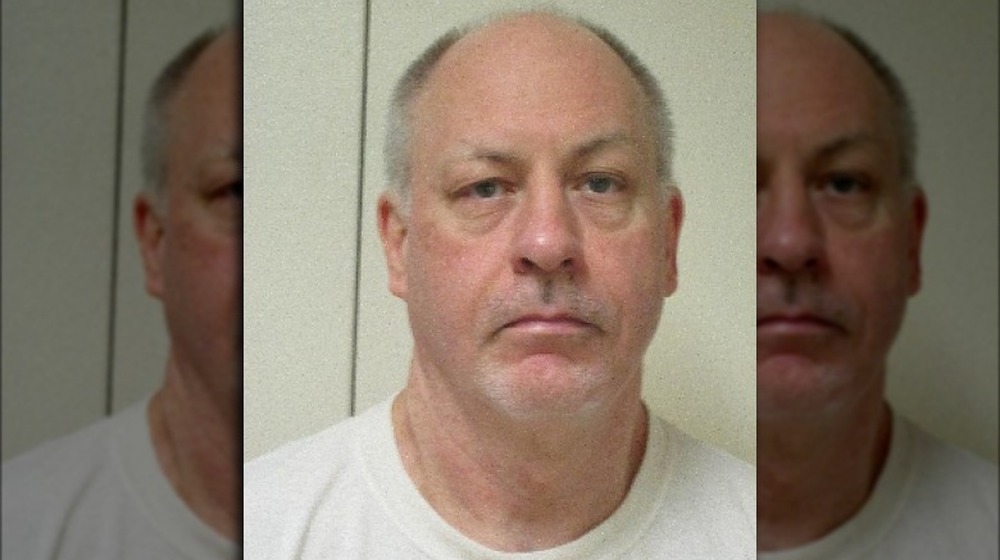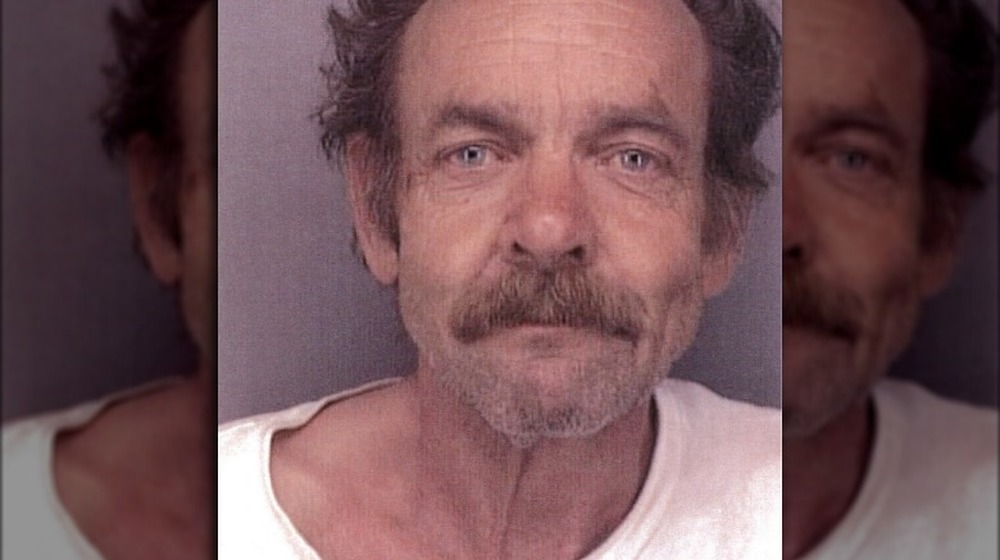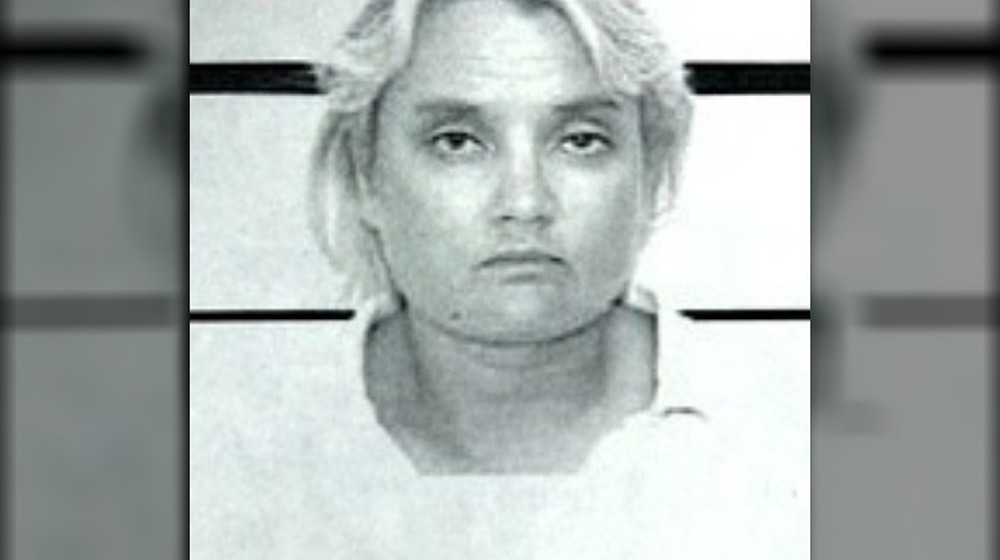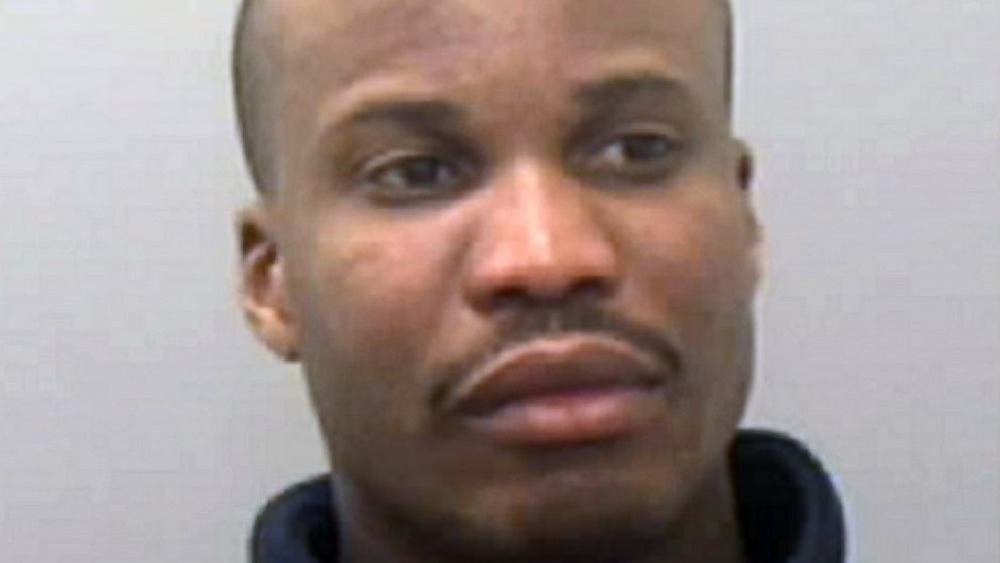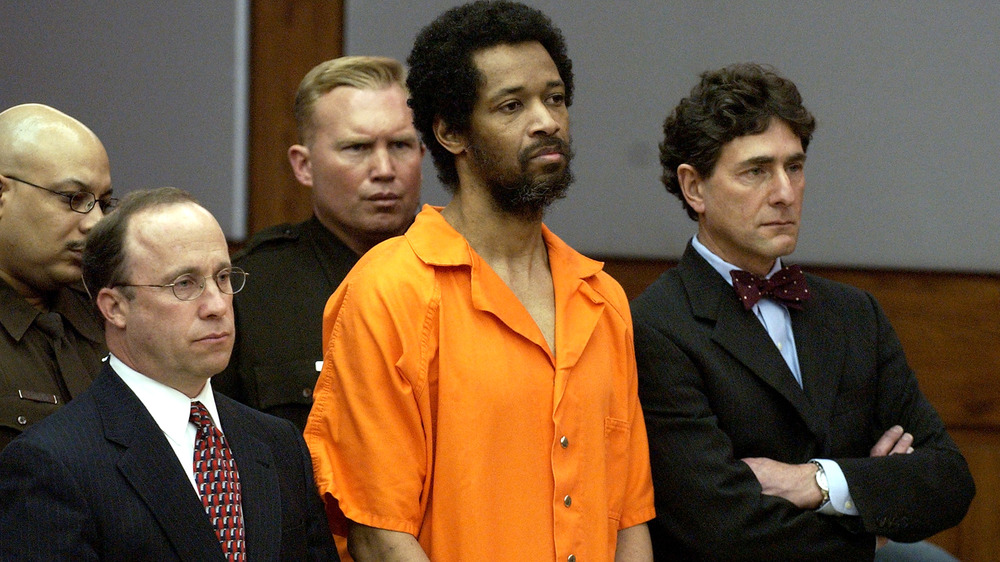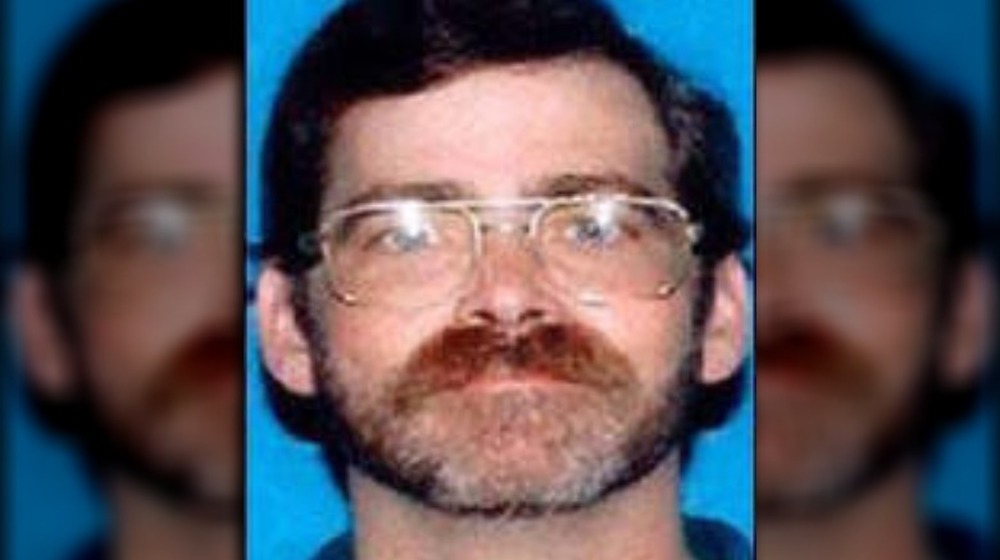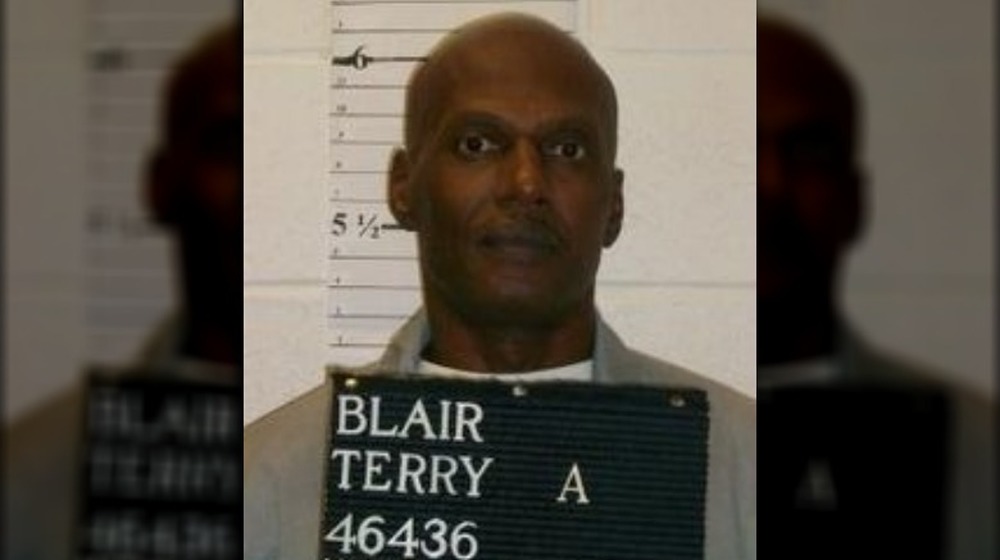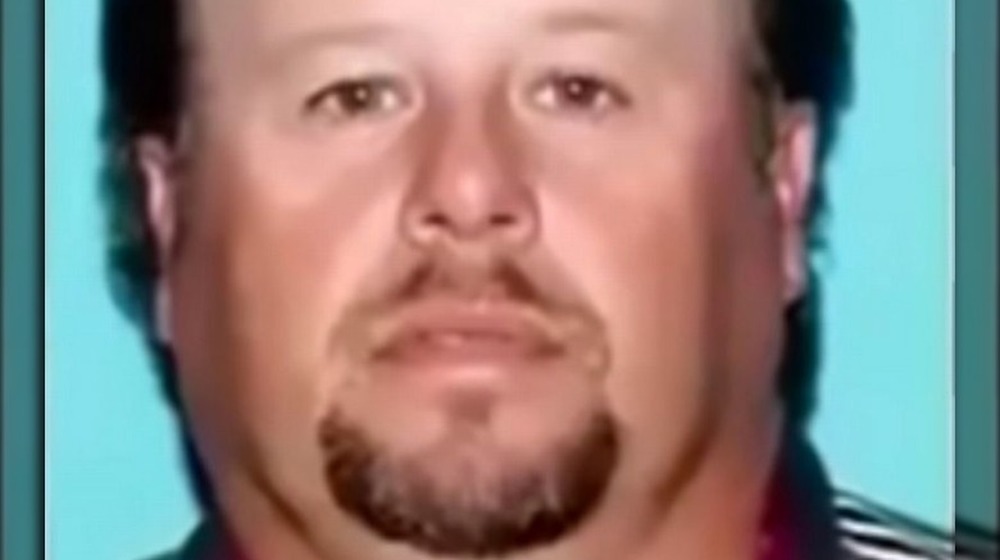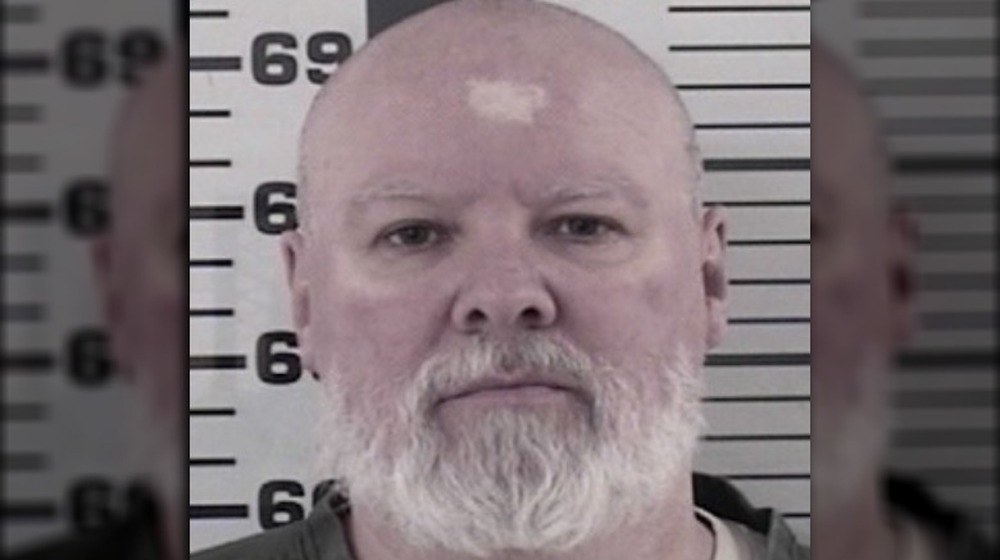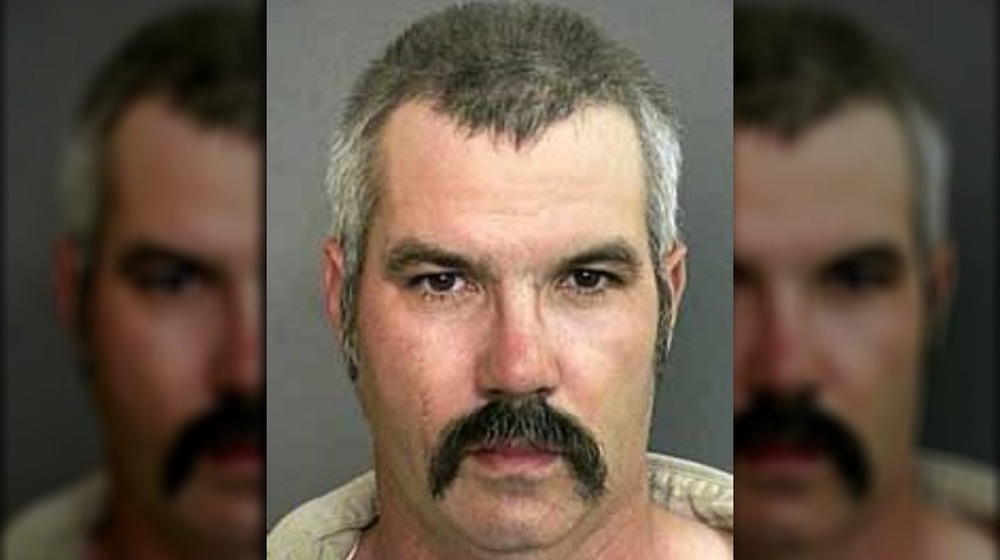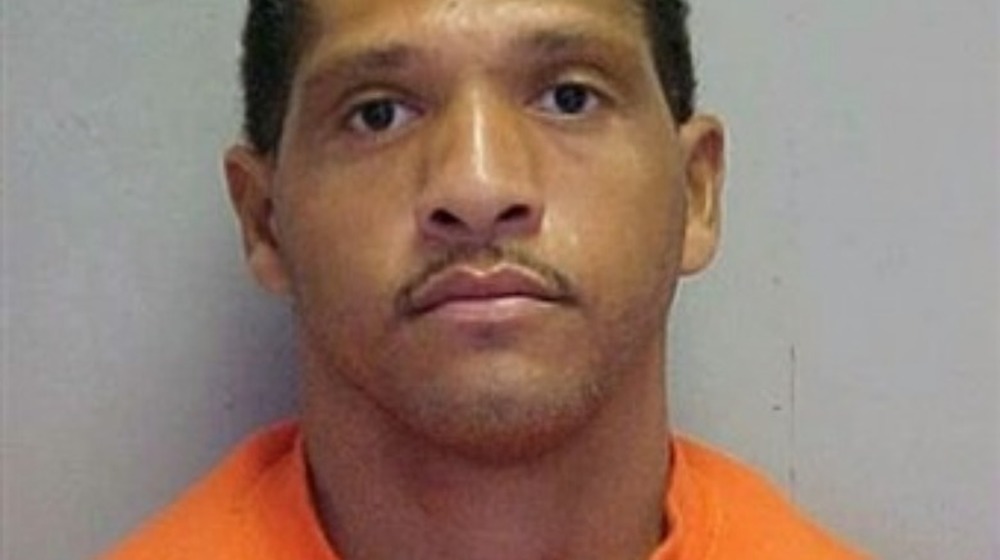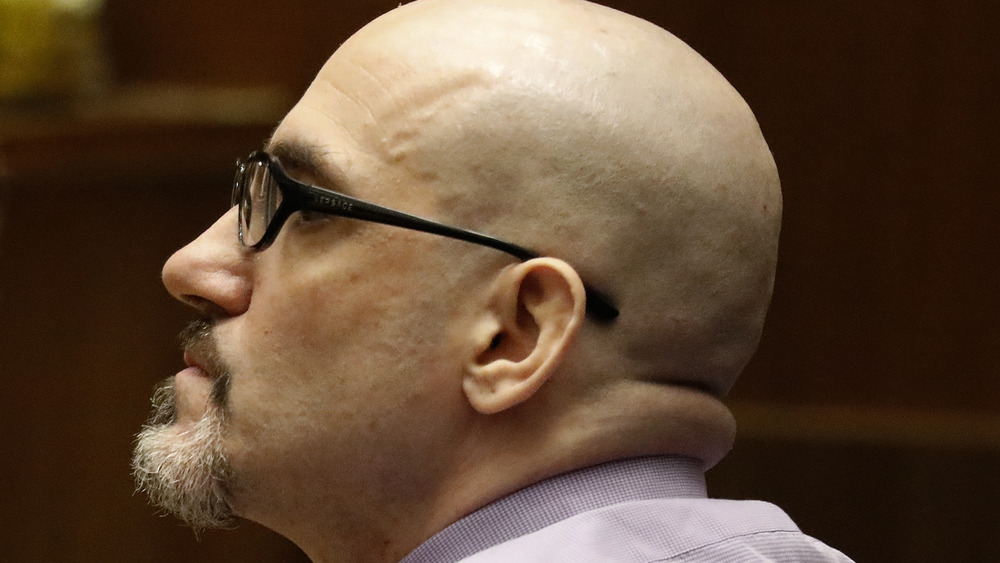Every Serial Killer Caught In The '00s
No one may ever know why the modern human mind has such a fascination with serial killers. Maybe it's because of the oddity in their beings that makes them something human yet something far removed all at once. It could simply be that serial killers are treated as if they're a metaphorical train wreck wearing a costume of human flesh and bone — it's hard to look away. For others, it could be a dark fear whispering that if the conditions were just right and the pieces on the board moved in the perfect way, they too could commit similar heinous acts. Yet, the fact remains, our culture seems to have an obsession with serial killers.
The killers are relatively rare, though it's hard to think of a time when they didn't exist, and they differ from mass murderers in notable ways. As Psychology Today points out, serial killings happen over a span of time, whereas mass murder happens in a single incident. Another notable difference is that serial killings will share specific commonalities, whereas mass murders are committed willy-nilly. Regardless, justice has put both types of killers behind bars, and there were quite a few serial killers caught in the 2000s.
The Spokane Killer Robert Lee Yates, Jr.
Robert Lee Yates, "The Spokane Killer," got his nickname for his murdering in Spokane County, Wash. That's not to say he didn't do a lot of it. Since 1990, Yates had killed at least 15 women, but it's possible there are more unknown victims out there in the world. According to the Seattle Times, Yates shot sex workers, homeless women, and drug addicts — people that likely wouldn't be missed — and dumped them in places far enough off the grid to avoid immediate detection. As 7 News points out, the killer would tell his wife he was going on "hunting trips," which in a way, he was. But the game Yates was hunting was human.
In 2000, Yates was arrested for, confessed to, and pleaded guilty on the charges of killing 13 women in Spokane County. Court House News Service says this earned the serial killer a hefty 408 years in prison, but the charges didn't stop there. Two years after the initial sentencing, Yates was charged with two more murders in a different county. This time, he was sentenced to death. Like all death penalty cases, Yates was awarded an appeal, but the sentence was upheld. However, in 2018, as noted by iFiberOne, the state of Washington abolished the death penalty entirely, giving Yates the opportunity to live out his years in prison instead.
The Chameleon Killer Terry Rasmussen
"The Chameleon Killer" moniker has nothing to do with this serial killer's ability to change form in any literal sense. Instead, it refers to Terry Rasmussen's uncanny ability to adopt identities at will, and he exercised this power from the late 70s until seven years after his death when his true identity was revealed by a genetic genealogist in 2017, according to ABC. Rasmussen had spent time in jail and prison under false identities before pleading guilty in 2003 to the murder of the wife of his "Larry Vanner" identity, and yet, no one discovered who he actually was. There have been several murders linked to Rasmussen throughout the years. The total number so far is sitting at a solid four, but the number is believed to be much higher.
As is clear from the killer's known victims and the timeline of his false identities, as seen on the WBAL website, Rasmussen had a type. He preyed on single mothers and murdered or kidnapped their children. After his death, Rasmussen was tied to the bodies of four victims found within two barrels in New Hampshire's Bear Brook State Park. In 2016, genetic evidence proved that one of these children was Rasmussen's biological daughter.
The Angel of Death killer, Vickie Dawn Jackson
Angel of Mercy type killers can be found in the history books as far back as the start of institutional medicine. They tend to work in the medical field, overwhelmingly as nurses, and prey on patients in hospitals and other medical facilities. Most opt for poison as the tool of their demented trade since it's less conspicuous than pushing victims down stairs or ending them with a barrage of bullets. Poison makes the murder of an already ill victim look like a natural, tragic death as long as nobody looks too closely, and they usually don't. Not until the bodies have wracked up anyway. In the 2000s, the United States had its own "Angel of Death," Vickie Dawn Jackson.
Jackson would kill her victims, of which Texas Monthly says numbered at least ten, with mivacurium chloride. The drug is a paralytic that would temporarily halt breathing, which was enough to kill off the 80-something-year-old patients that Jackson murdered between December of 2000 and February the following year. The Angel of Death pleaded guilty in 2006 and was given a life sentence for the ten killings, as noted by NBC, but she's believed to have killed upwards of 20 patients in all.
Maury Travis and his tapes of horrors
As is common in serial killer thrasher films and those easily busted "whodunits," some real-life serial killers like to keep mementos of their malicious conquests. Of course, this tends to lead to an easier conviction once their homes are raided than it would if they simply left well enough alone. In the case of Maury Travis, it wasn't a physical piece of his victims that he collected for his demented reflection but a series of horrifying videos.
Travis' home was raided in 2002, as noted by St. Louis Post-Dispatch, after police received a letter about a series of murders that contained a map to one of the bodies. In the killer's home, they found a torture chamber, bondage gear, and the infamous tapes. The videos contained footage of Travis assaulting, torturing, and strangling victims who, as it turned out, he'd kept as prisoners for a time before their deaths. Travis committed suicide within days of being taken in, so he was never convicted of his crimes, but he left behind plenty of tapes as evidence. In his suicide note, according to ABC, the killer bragged about murdering 17 women. The police have only identified 12 so far.
The Beltway Snipers Lee Boyd Malvo and John Allen Muhammad
Lee Boyd Malvo and John Allen Muhammad are the two pieces of a serial shooter duo that terrorized Virginia and Maryland for a three-week period in 2002, known as "The Beltway Snipers." Using a Bushmaster .223, the shooter pair gunned down ten victims and injured several others, according to the FBI, including one of their own analysts. The victims seem to have been chosen at random and killed out in the open, which naturally caused a wave of fear to sweep through the area. One was shot outside of a department store, another pumping gas, and others who were shopping or going about other daily tasks with no knowledge of their impending deaths anywhere on the horizon.
The pair was caught after their three-week run by a task force comprised of just about every law enforcement agency you can think of and taken into custody without a fight. Muhammad was sentenced to the death penalty in 2003, which The Washington Post says was carried out in 2009, while Malvo, a minor at the time of the killings, received several life sentences. Though the pair was only charged and convicted of killings on the east coast, they're suspected of shootings that span across the entire nation.
A serial killer with a life of psychiatric issues, David Edward Maust
Though it seems natural that serial killers must certainly have something inherently wrong with their brains that allows them to perpetrate such terrible crimes, the mental health aspects of these situations are often overshadowed by the sheer horror of their stories. For David Edward Maust, the psychological issues at play are almost as terrifying as his killings.
Maust was arrested in 2003 and convicted in 2005 for the murders of three teenage boys, but it wasn't the first time he'd been convicted of murder, according to the La Crosse Tribune. Less than a decade before, Maust had been released after serving 17 of 35 years for the murder of a different teen, and he'd served time for yet another stabbing before that. Clues of his dark nature had been present for his entire life, but it took decades to finally contain his murderous impulses.
The Chicago Tribune points out some seriously chilling tidbits of Maust's history that foreshadowed his murders, such as the time he beat a squirrel to death with a baseball bat or the killer's diaries that were spilling with horror stories about stalking and killing teenage boys in their sleep. According to NWI.com, Maust grew up with rage problems and spent time in and out of psychiatric facilities throughout his childhood.
The Other Baton Rouge Killer, Sean Vincent Gillis
Sean Vincent Gillis killed at least eight women before he was arrested in April of 2004, according to ThoughtCo. Gillis had been a suspect in the case of Donna Bennett Johnston's murder leading up to his arrest thanks to a matching pair of Goodyear tire tracks found at the crime scene, but it was ultimately a DNA match that put the nail in the coffin of his serial killing career. When the police raided the killer's home, they found 45 digital pictures of his mutilated victims. Because of the overwhelming evidence, he was found guilty, as ATI points out, and sentenced to life in prison in 2008.
Gillis' kill count is difficult to pin down for the same reason he's called "The Other Baton Rouge Killer" — there was another killer operating at the same time and in the same area. Between "The Baton Rouge Killer" Derrick Todd Lee and Gillis, southern Louisiana had become a terrifying place in the 90s and early 2000s. Lee, according to Oxygen, was found guilty of killing two women, but DNA evidence tied him to the murders of seven. Like Gillis, it was the DNA evidence that led to Lee's capture in 2003 and the death penalty sentence that Lee wouldn't live long enough to see carried out. Instead, the killer died of heart disease in 2016.
The Prospect Killer Terry Blair
Terry Blair, "The Prospect Killer," whose nickname comes from the Prospect St. area of Kansas City where his killings occurred, seems to have murder in his genes. Blair's final run of terror went down in 2004 when, as NBC reports, he killed six women. At the time these six murders took place, Blair was on parole for the murder of the then-pregnant mother of his two children in 1982. He'd also had two other murder charges, three sexual assaults, and several assault charges dropped over the years. Ultimately, Blair would plead guilty in a deal with prosecutors in return for them dropping the pursuit of the death penalty.
Blair is only one in a family of killers. According to The Kansas City Star, Blair's mother had also been charged with murder... twice. The first charge was dropped, but in 1989, she was found guilty of killing her boyfriend. Blair's nephew, Diamond Blair, was convicted of second-degree murder in 2013 after shooting a victim during a robbery, and the publication also points out that Diamond Blair's brother had been charged with murder in 2002.
The Bayou Strangler Ronald Dominique
Ronald Dominique wasn't much of anyone before he became "The Bayou Strangler." At first glance, he'd look like your regular nobody criminal. According to ATI, he was a large, overweight guy with a heart condition that frequented gay clubs and preyed primarily on homeless men. He'd been arrested for harassment, a DUI, assault, and forcible assault before he ever started killing, and it was the time he spent behind bars on his assault charge that kicked the whole murder thing off.
After his arrest in 2006 for the murders of two young men, according to ThoughtCo, Dominique blurted out a confession that would've shocked anyone who knew the man — he'd murdered 23 men. The killer had an MO, as all serial killers tend to, but Dominique's MO was contrary to what you might believe when taking in his physical appearance. He wasn't particularly good looking by conventional standards, but he still managed to seduce his victims into coming home with him, often with the promise of cash. From there, he'd (sometimes) assault them, kill them, and dump their bodies in sugarcane fields or back Louisiana bayous, which is how he got his name. The whole reason he killed these men? To avoid going back to jail for assaulting them.
An FBI informant turned serial killer, Scott Kimball
The situation revolving around serial killer Scott Kimball might look like a deadly blunder by the FBI, and honestly, it kind of was. Or, it could've been Kimball's wits that allowed him to go on his killing spree, earning the nickname "Hannibal Lecter." Kimball had been sitting in prison until 2002 on unrelated charges when he leveraged some information passed on by his cellmate into a career as an FBI informant, according to Express Digest. He was released from prison to help with a drug investigation, and no one suspected he'd use his freedom to commit a string of serial murders.
In 2006, as noted by The Mercury News, Kimball was arrested after a car-chase-turned-standoff for check fraud. Shortly after, the killer pleaded guilty to four murders and has since been linked to others. In all, it's believed Kimball may have killed around 20 people, using the name "Hannibal" to initiate relationships with at least one of his victims. In what very well may have been an attempt to live up to his moniker, the killer plotted an escape from prison that was supposed to turn into yet another murder in 2017, according to The Denver Post, but was found out before he could execute his plan.
The Union County Serial Killer Scott Wilson Williams
Scott Wilson Williams, "The Union County Serial Killer," selected his victims from what authorities, according to the Winston-Salem Journal, call a "high-risk lifestyle," of which Williams was believed to be part of himself. To give you an idea of what that means, between Williams' three known victims, they'd shared two drug convictions and one charge of prostitution. The killer operated in Union County, N.C., from where his not-so-creative nickname stems, and has been convicted of three murders that took place in 1997, 2004, and 2006. The bodies of his victims were each found shot, mutilated, and dumped near rural roads.
When investigators searched Williams' home after his arrest in March 2006, they discovered a collection of handguns and implements that under less serial killer-related circumstances would usually be found in a BDSM dungeon. The murderer was found guilty in 2008 of killing each of his three victims, and he earned one life sentence for each, but not until after revealing some other gruesome facts about the murders. The Charlotte Observer recounts Williams' confession to cooking the flesh of one of his victims with the intention of turning it into a cannibalistic delight, only to find the smell of the meal put him off.
The Baseline Killer Mark Goudeau
The "Baseline Killer" Mark Goudeau was one of the most prolific serial killers of the 2000s. In the timeline laid out by Arizona Republic, not only are the killer's nine confirmed murders present but also a whole list of crimes that are nearly as terrible. Along with murder, Goudeau committed several armed robberies and sexual assaults of both adults and minors. Goudeau used a gun in a serial-shooter style to pull off his crimes, which, as you'll learn, made Pheonix, Ariz., a confusing place.
At the same time the "Baseline Killer" was wreaking havoc on the community, the "Serial Shooter," Dale Hausner, was killing in the Pheonix area as well, according to AZ Central. Hausner was convicted of killing six victims, along with 72 other charges, in 2009 and sentenced to six counts of the death penalty. This killer had a thing for shooting. Not only did he murder humans, the "Serial Shooter" is suspected of killing at least one dog and several horses.
Hausner never made it to the metaphorical "electric chair" but instead killed himself while waiting on death row. Goudeau was also sentenced to death after being convicted of what Tucson.com points out were 67 felony charges, nine of which were murders. He tried to appeal the sentence in 2016, but the nine death sentences were upheld.
The Hollywood Ripper Michael Gargiulo
The "Hollywood Ripper" Michael Gargiulo was arrested in 2008 for three stabbings in Los Angeles, only two resulting in death, but, according to ABC, he's suspected of at least one more killing in Illinois. The trial, being that the killings happened in Los Angeles, received a fair amount of media attention. Not so much because of who the killer was, but because one of his victims was killed shortly before she was supposed to go on a date with Ashton Kutcher, who testified during the trial. Gargiulo was convicted of his California-based crimes in 2019.
Now, the low number of killings might make it difficult to believe that Gargiulo was a serial killer, but serial killing is all about the process. For years, as authorities relayed to CBS, Gargiulo stalked his victims and plotted the "perfect" time to attack the women who lived within a few hundred feet from his home. The one surviving victim detailed Gargiulo's attack during the trial (found via ABC), saying she awoke to the killer straddling her in her bed and stabbing her repeatedly with a serrated knife. Luckily, this killer, along with the rest of the serial murderers captured in the 2000s, won't be seeing freedom anytime soon.

